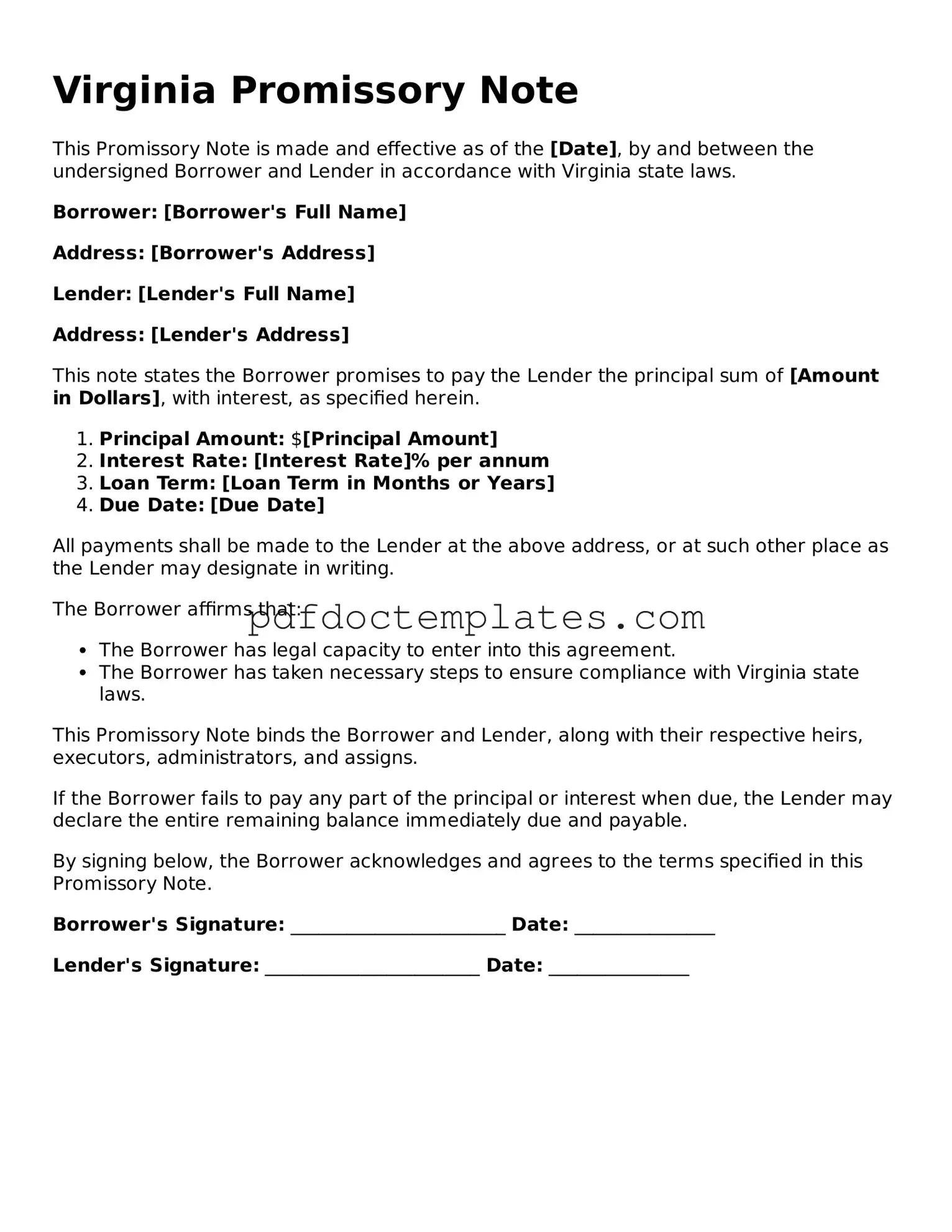Virginia Promissory Note
This Promissory Note is made and effective as of the [Date], by and between the undersigned Borrower and Lender in accordance with Virginia state laws.
Borrower: [Borrower's Full Name]
Address: [Borrower's Address]
Lender: [Lender's Full Name]
Address: [Lender's Address]
This note states the Borrower promises to pay the Lender the principal sum of [Amount in Dollars], with interest, as specified herein.
- Principal Amount: $[Principal Amount]
- Interest Rate: [Interest Rate]% per annum
- Loan Term: [Loan Term in Months or Years]
- Due Date: [Due Date]
All payments shall be made to the Lender at the above address, or at such other place as the Lender may designate in writing.
The Borrower affirms that:
- The Borrower has legal capacity to enter into this agreement.
- The Borrower has taken necessary steps to ensure compliance with Virginia state laws.
This Promissory Note binds the Borrower and Lender, along with their respective heirs, executors, administrators, and assigns.
If the Borrower fails to pay any part of the principal or interest when due, the Lender may declare the entire remaining balance immediately due and payable.
By signing below, the Borrower acknowledges and agrees to the terms specified in this Promissory Note.
Borrower's Signature: _______________________ Date: _______________
Lender's Signature: _______________________ Date: _______________
